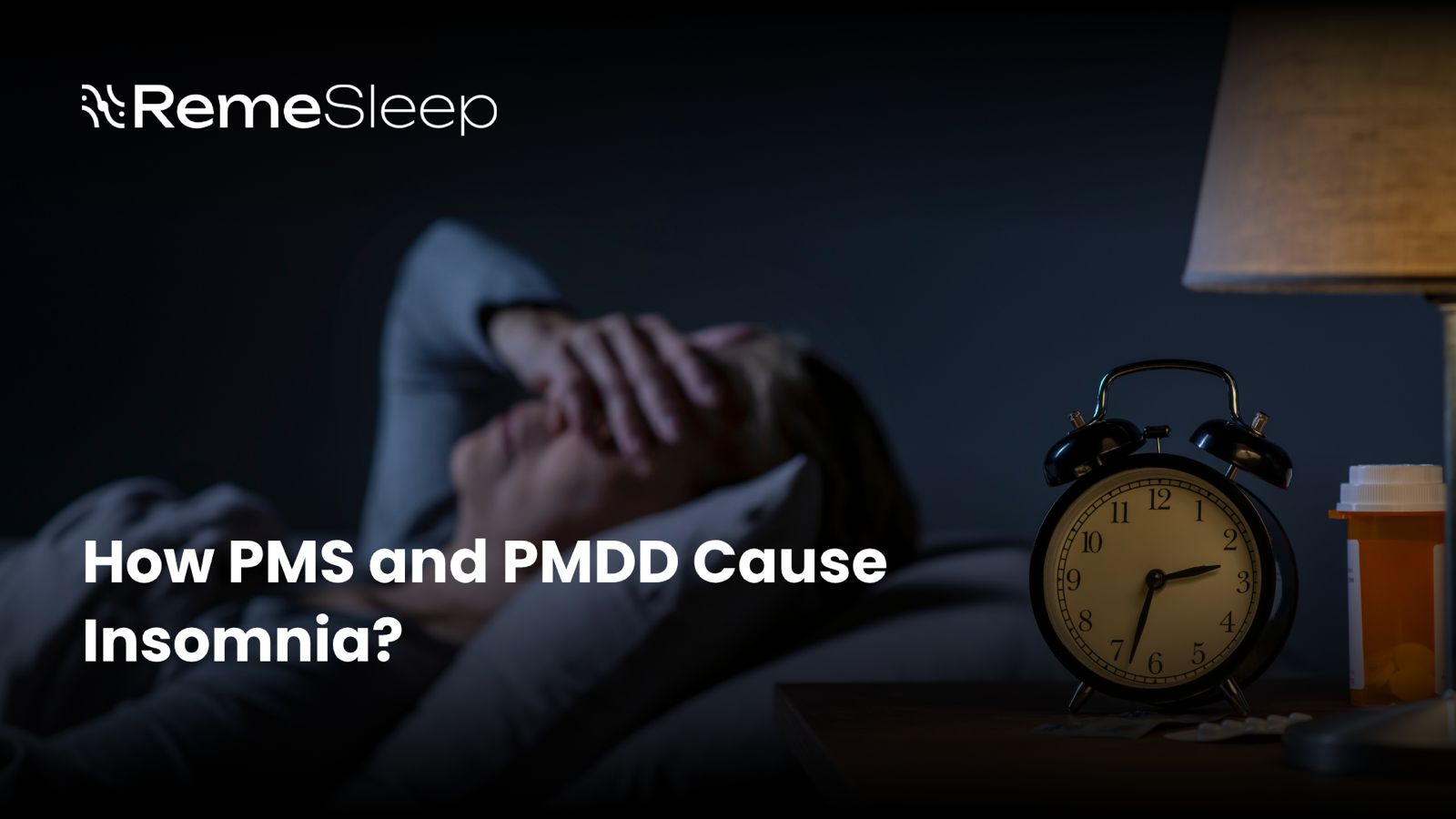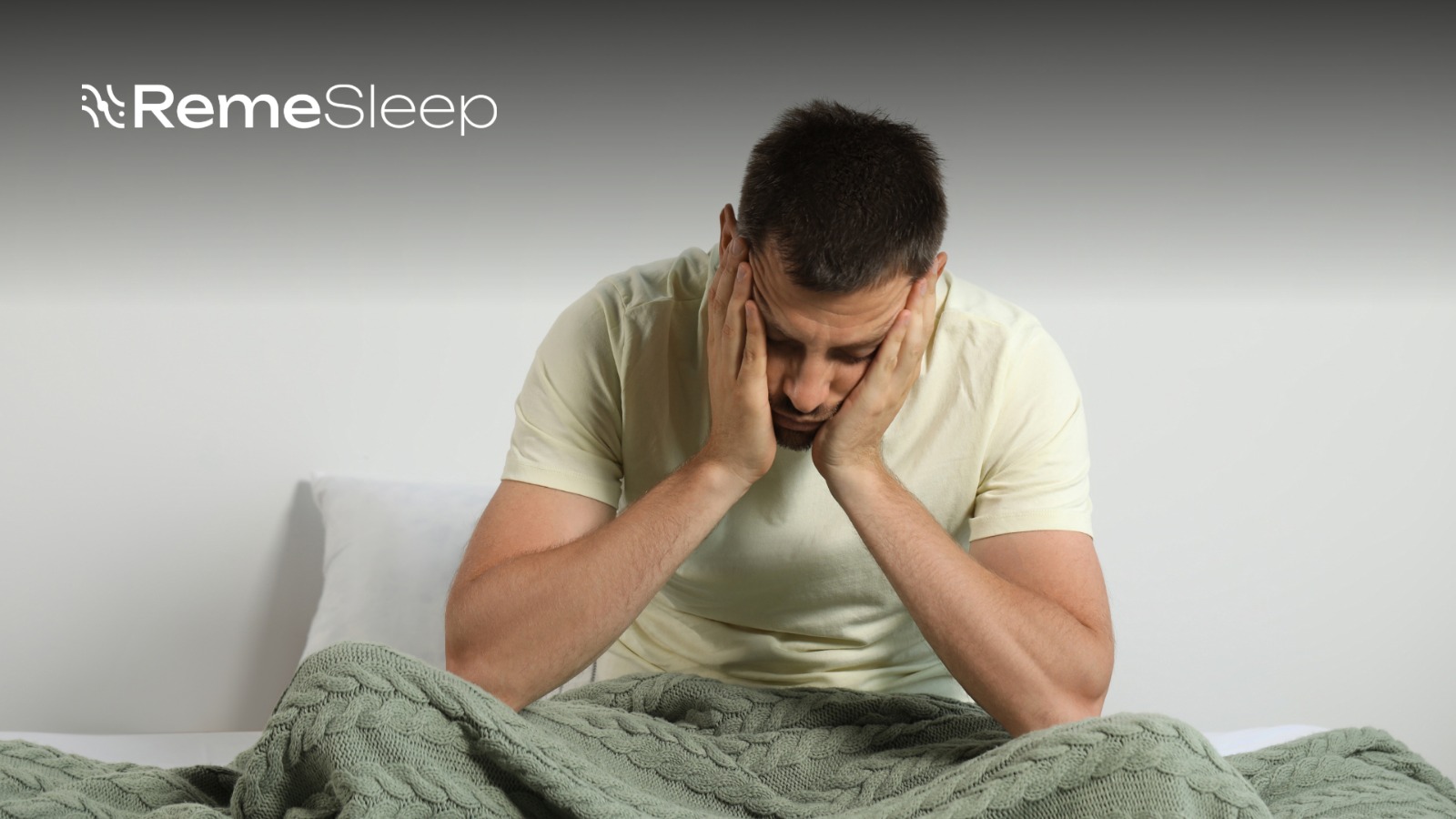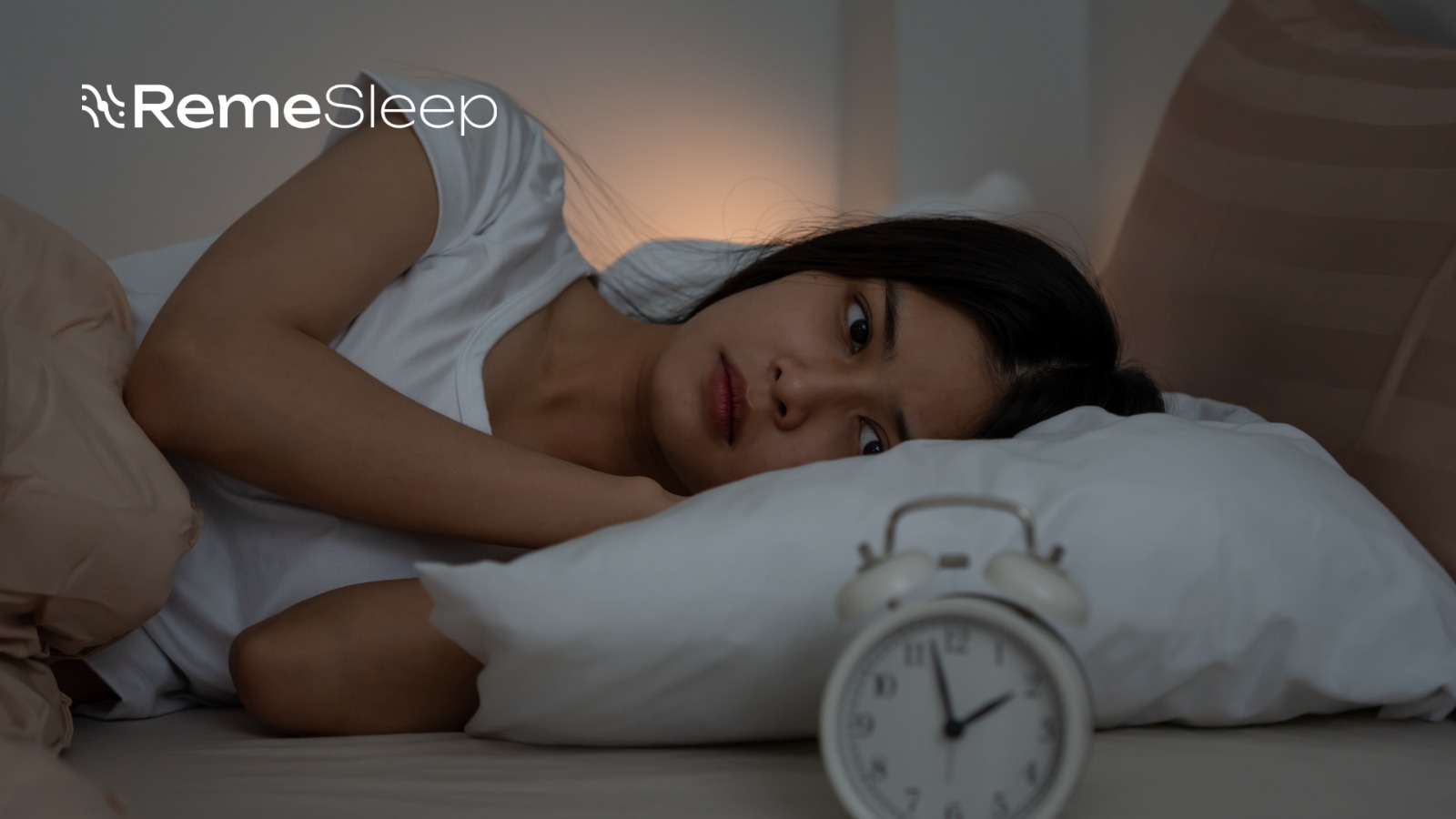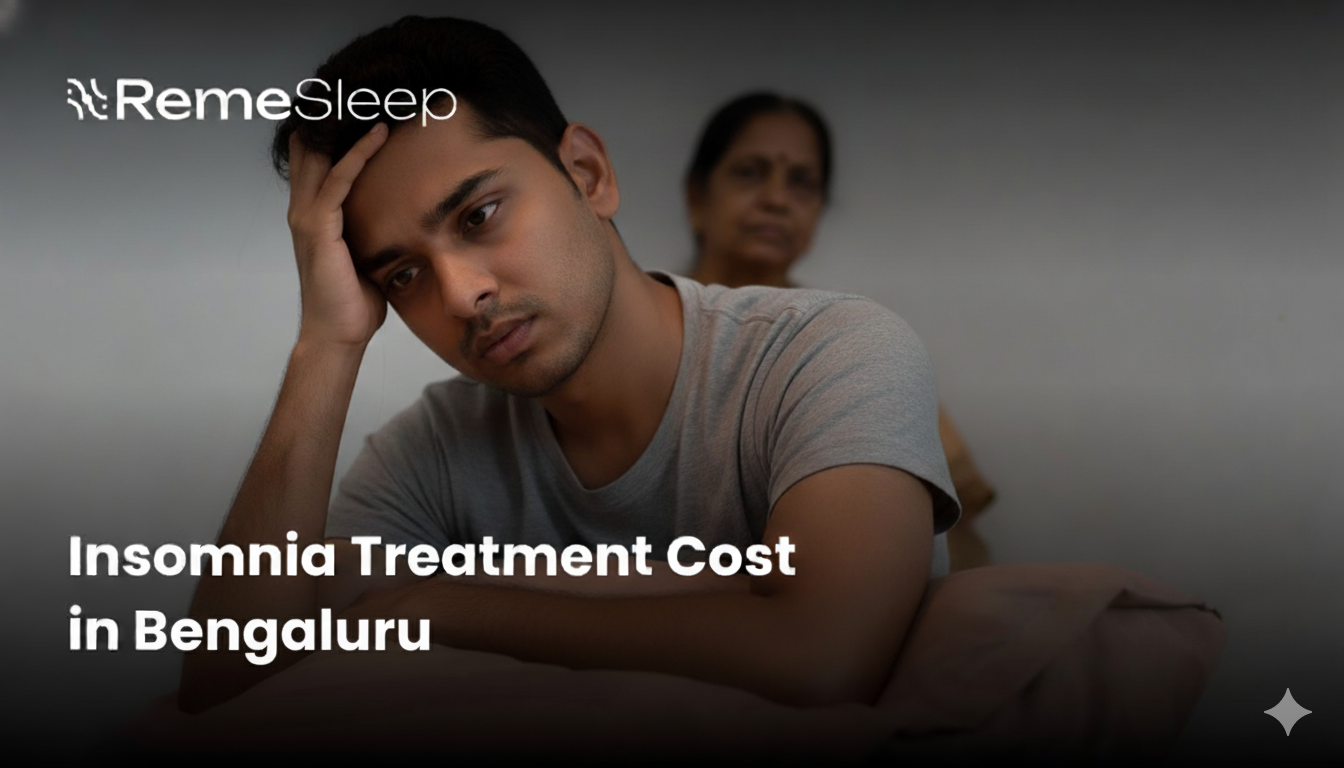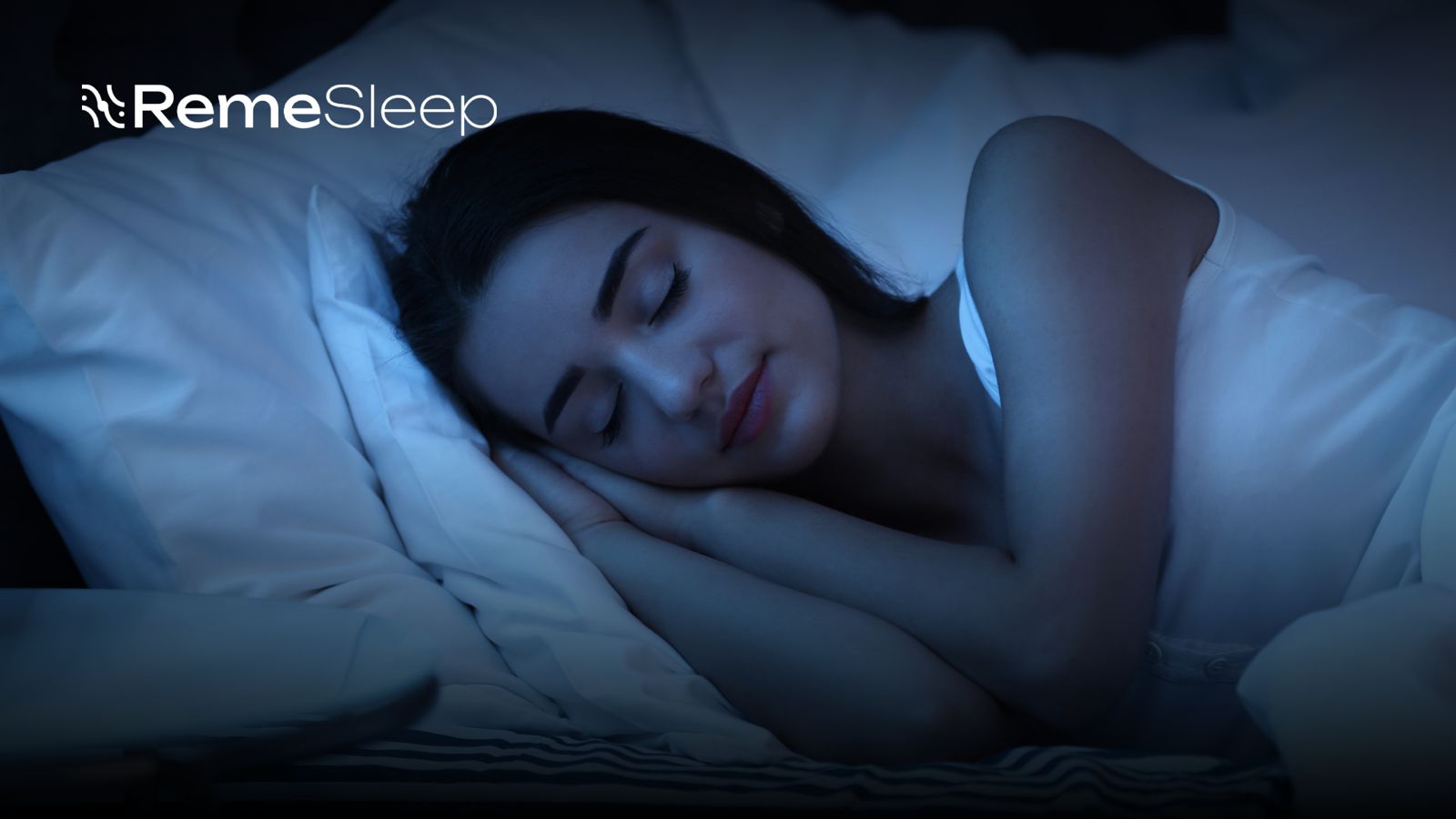About 90% of menstruators are affected by premenstrual syndrome (PMS), which produces a variety of symptoms before and during menstruation. Premenstrual dysphoric disorder (PMDD) is a more severe form of PMS that can result in substantial mood alterations that can include PMDD insomnia symptoms. The premenstrual phase is a common time for insomnia and PMS-related symptoms to appear, resulting in difficulty falling and/or staying asleep. Because insomnia can present in PMDD, it may impact the functionality of daily life through restless nights and irregular sleep. Understanding how PMS interrupts sleep, recognizing how insomnia occurs during PMS, considering strategies to overcome these issues, and improving overall sleep could be key to overcoming insomnia during the PMS phase.
What is period insomnia?
“Period insomnia” is a prevalent type of hormonal insomnia that occurs in the week or so leading up to menstruation and improves with the onset of bleeding. Women with Premenstrual Syndrome (PMS) and insomnia generally have poor sleep quality but are still able to function fairly well during the day, while women with Premenstrual Dysphoric Disorder (PMDD) and insomnia experience more severe sleep disruption that interferes with their day-to-day lives. Grasping the reasons for insomnia in women with PMS or PMDD is a crucial step in seeking relief from insomnia associated with PMDD. Most women experience relief from PMS insomnia with natural remedies that improve sleep quality.
The Basics of the Menstrual Cycle
1. Menstruation Phase
The menstruation phase starts on the first day of your period and lasts for 4 to 6 days (with variation). This is the phase when the uterine lining is shed, and marks the formal start of a new menstrual cycle. For many people, there is some relief from PMS and insomnia at this point, as hormonal levels begin to change.
- Bleeding starts (Day 1 of cycle)
- Lasts 4–6 days (may vary)
- Typically, insomnia associated with PMS lessens as menstruation begins
- Sleep quality may start to improve gradually after this phase begins
- Follicular Phase
The follicular phase begins when menstruation begins and ends at ovulation. It typically lasts 10 to 16 days. During follicular, the body gets ready to release an egg and estrogen levels begin to increase, which often corresponds to better sleep, although you may still have any lingering PMS sleep challenges in the first few days.
- Begins with menstruation, ends with ovulation
- Hormones (especially estrogen) begin to increase
- Possible lower chances of hormonal insomnia
- Sleep usually stabilizes for most people
3. Ovulation Phase
Ovulation typically occurs at around the mid-point, or day 14, of the menstrual cycle. An egg is released from the ovary during ovulation. A sharp rise in hormone levels occurs at this time, and it may lead to subtle sleep issues for some women. Overall, it would be a relatively sleep well (with “some” sensitive exceptions).
- Occurs during the mid-point of the cycle around Day 14
- Release of an egg from the ovary
- Some hormonal changes might lead to subtle sleep issues for sensitive sleepers
- PMS and sleep challenges might begin for some
4. Luteal Phase
The luteal phase is the third and final phase, occurring for approximately 14 days. This is typically when the symptoms of PMDD and PMS are at their height. At this time in the cycle something like PMS insomnia will seem to be at the greatest frequency than any other time, whether with PMDD or just being a woman. During this phase, those experiencing PMDD will have sleep disturbance symptoms, generalized fatigue, and nights of unsettled sleep that can be implicated in the quality of sleep.
- 14 days from the last period
- The time of the month for most PMDD sleep disruption and PMS sleep disturbance
- Symptoms – hormonal insomnia, poor quality of sleep, fatigue during the day
- Best time to inquire about natural remedies for PMS insomnia
- Managing the luteal phase is key in trying to improve sleep and lessen PMS sleep disturbances.
Physical and emotional changes before your period
Up to 90% of people who menstruate experience physical and emotional changes before their period, commonly referred to as PMS symptoms. In more severe cases, these changes are classified as PMDD (premenstrual dysphoric disorder), a condition that significantly interferes with daily life, affecting work, relationships, and social activities. Common PMDD symptoms and PMS-related discomfort in the premenstrual phase may include:
- Bloating and breast tenderness
- Headaches and changes in appetite
- Low sex drive and fatigue
- Anxiety, irritability, anger, or sadness
- Mood swings and a desire to be alone
- Trouble concentrating or feeling out of control
- Lack of energy, restlessness, and tension
These emotional and physical symptoms are often linked to hormonal insomnia, with many experiencing PMS and insomnia or PMDD and sleep problems. These conditions may also cause sleep disturbances in PMDD, leading to poor sleep quality and increased daytime fatigue.
Why does your hormone affect your sleep?
Hormonal insomnia can lead to insomnia and PMS, or PMDD, and sleep problems in the week before the menstrual period. People who have PMDD produce less melatonin and are less sensitive to melatonin, which can present as insomnia symptoms with PMDD and sleep problems with PMS. Moreover, an increase in progesterone can contribute to insomnia with PMS.
During the week before menstruation, many people experience changes to their sleep pattern, with increased light sleep resulting in less time in REM sleep and disturbances of sleep in PMDD, and difficulties sleeping in PMS. With PMDD, people may also experience increased deep sleep secondary to low melatonin.
These hormonal changes are key contributors to insomnia for women who have PMS and PMDD, and this requires targeted treatment for both insomnia and the use of natural remedies for the management of PMS insomnia.
How to Get Better Sleep Before Your Period
If you deal with sleep disturbances before your period or insomnia during your premenstrual syndrome (PMS), then taking steps to improve your sleep hygiene can be beneficial. For those experiencing premenstrual dysphoric disorder (PMDD) with sleep issues, your physician may provide a treatment plan that includes addressing all of the symptoms you experience, including PMS, insomnia, and PMDD sleep disruption. Examples of proposed treatment include:
- Regular exercise before periods
- Relaxation exercises, to help calm your head
- Chasteberry (vitex agnus castus) supplementation
- Hormonal birth control or other hormonal treatment
- Acupuncture
- Bright light exposure therapy
- Cognitive Behavioral Therapy (CBT) For Insomnia
All of these methods help you sleep better and rest easier with your PMS sleep difficulties and PMDD insomnia symptoms, respectively.
Remesleep’s sleep tips to combat period insomnia
Making lifestyle changes and practicing good sleep hygiene can greatly reduce the impact of PMS sleep issues and PMDD sleep disruption on your rest. Establishing a consistent bedtime routine and daytime habits helps manage sleep problems during the period and improves overall sleep quality. Key tips include:
- Exercising for 30 minutes daily, preferably outdoors and early in the day
- Getting at least 30 minutes of bright, natural light exposure each day
- Going to bed and waking up at the same time every day
- Avoiding long or late afternoon naps
- Creating a comfortable sleep environment with the right mattress, pillows, and accessories
- Keeping your bedroom dark, cool, and quiet during sleep
- Developing a calming bedtime routine, like reading, listening to music, or doing yoga
- Avoiding caffeine at least 6 hours before bedtime
- Steering clear of alcohol and cigarettes at least 3 hours before bedtime
- Eating smaller evening meals
